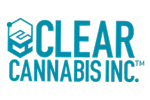
This week’s podcast episode of Let’s Get CLEAR! features a unique conversation with teenagers offering perspectives on drug awareness, peer influence, and the critical role of communication in prevention efforts.
6 strategies for preventing underage drug use include: emphasizing the importance of early education, open communication, peer-led initiatives, mental health support, and family involvement. Highlighting the necessity of adapting prevention efforts to connect with today’s youth, leveraging insights from peer influence and the critical role of community support in fostering environments where young individuals can thrive without turning to substance use.
6 Strategies for Underage Drug Use Prevention for Today’s Youth
In our latest episode of Let’s Get CLEAR!, we feature a unique conversation with teenagers, offering perspectives on peer influence and the critical role of communication in prevention efforts.
Underage drug use remains a pervasive concern for parents and communities alike. As societal attitudes towards substance use evolve, it’s imperative to identify and implement strategies that genuinely connect with today’s youth. Insights from my own teenager have starkly highlighted a common misconception among adults: we often miss the mark on what truly resonates with young people.
1. Education and Awareness:
Equipping young people with factual information about the risks and consequences of drug use empowers them to make informed choices. Initiatives such as school programs, community workshops, and awareness campaigns are pivotal in enlightening teenagers and their parents.
The Substance Abuse and Mental Health Services Administration advocates for starting conversations with children about drugs and alcohol very early. Children form their opinions about substance use as early as nine years old. By the time they reach 15, half of all teens have experimented with alcohol. Waiting until high school to address substance use is often too late; by then, many teens have already formed their own views on the matter.
2. Open Communication:
Fostering open, honest dialogues between parents, guardians, and teenagers is essential. Creating a safe, non-judgmental space where teens feel comfortable sharing their thoughts and experiences can significantly strengthen familial bonds.
This principle extends beyond discussions about substance use. Teens, like all humans, need a supportive environment to thrive—one where they feel respected and heard. While it may seem simpler to mandate obedience, history, and personal experience tell us that coercion often backfires, leading to rebellion rather than compliance.
3. Peer-Led Initiatives:
Peer influence is a powerful force in a teenager’s life. By harnessing this through peer-led initiatives, we can offer teenagers relatable platforms to share their experiences and healthy social alternatives that don’t involve drug use. This peer-driven approach can effectively debunk myths and dismantle misconceptions surrounding substance use.
My own teenager’s involvement in sports and her social circle has created a protective environment where substance use is discouraged. This has been a humbling reminder that youth-led prevention is often the most impactful, underscoring the importance of peer influence over parental guidance in certain aspects of their lives.
4. Mental Health Support:
Addressing underlying mental health issues is a critical component of comprehensive drug use prevention strategies. Providing access to mental health resources, counseling, and support systems can help teenagers manage stress, anxiety, and depression, reducing their inclination to seek solace in substances.
Teenage years are fraught with emotional volatility, making it challenging to discern between typical adolescent behavior and signs of a deeper issue. While not every teenager who experiences mood swings is at risk, it’s vital for adults to recognize and address potential mental health concerns proactively.
5. Family Involvement:
The role of the family in a teenager’s life cannot be overstated. Active involvement from parents, siblings, and extended family members in creating a nurturing environment is crucial. Through family activities, open discussions, and leading by example, families can significantly influence a teenager’s attitude toward drug use.
Past strategies like the “Just Say No” campaign have proven ineffective. Instead, preparing teenagers with practical techniques for challenging situations, such as being offered a ride by someone who has been drinking, can equip them to make safer choices.
6. It Takes a Community:
The broader community plays an essential role in preventing underage drug use by fostering a sense of belonging and connection. With underage drug use at its lowest rates since the 1990s, according to Newport Academy, it’s clear that community engagement and support are key.
As we continue to navigate the changing landscape of adolescence, adapting our prevention methods to align with the realities and pressures faced by today’s youth is crucial. Through collective effort, we can empower teenagers to tackle the complexities of growing up with resilience.
This week’s podcast episode of Let’s Get CLEAR! features a unique conversation with teenagers offering perspectives on drug awareness, peer influence, and the critical role of communication in prevention efforts.
Listen to Let’s Get CLEAR!
– Spotify: https://open.spotify.com/show/2LnywFUP6TtMBDV5HF2WTb
– Apple Podcasts: https://podcasts.apple.com/us/podcast/lets-get-clear/id1728283522
Let’s Get CLEAR! is created by Cliintel Capital Management Group:
Instagram: @Cliintel
Facebook: /Cliintel
Website: https://cliintelcapital.com/
Linked In: https://www.linkedin.com/company/cliintel
Listen to Let Get CLEAr Now
